I am conscious of the fact that this is likely the most anticipated index preview. The great news is that if you’re an Eldar player, I think you’re going to love what you see here. The index offers an incredibly deep set of unit options and directions that you can take your list building; aspect heavy, wraith heavy, vehicle heavy, harlequin heavy, Ynnari – all viable options with this index set. Additionally, the faction ability, enhancements, and stratagems all open a lot of exciting and clever options to keep your opponent on the back foot.
If you are not an Eldar player, however, the 10th edition party is kicking off in full swing and the Aeldari index is going to arrive by flattening your mailbox with their top-down sports car, Ace of Spades booming from the sound system, and inject a level of intensity into the vibe that no one was really here for. Friends will insist that they’re not always like this, but there’s nothing you can do about it, and as every moment passes it looks more and more like the night’s going to end with the cops getting called.
And thus, let’s dive into the Aeldari at the outset of 10th
Before we do we’d like to thank Games Workshop for providing us with a review copy of the Index.
Faction Rule

The overarching theme of the Aeldari will be the level of reliability with which they take to the table. Many of their army rules are geared towards the idea that when the Eldar commit their ever-waning forces to battle, that the game plan plays out exactly as the runes have foretold it would. This theme is carried out at each level, starting at the top with the Faction Rule.
Strands of Fate: At the start of the battle, the Eldar player may roll 12 d6 which then become a dice pool that may be inserted in place of any hit, wound, damage, save, advance, charge, or battle shock test die roll. The player may reroll this initial set as many times as they like but lose 1 d6 each time that they do so.
As a rule, this is an exceptionally powerful boost to the army. While it requires careful game planning and judicious use of the rolled results it will nevertheless be incredibly potent in key moments where ensuring something that you need to happen, in fact, does. It’s a change from the 9th edition rule in that these dice are rolled all at once in the beginning and kept entirely vs rolled round-by-round and choosing a subset of results. It also simplifies the mechanic as a dice is simply a dice, rather than representing a ‘6’ in a particular category. The total number of usable dice is lower than in 9th (20-25 guaranteed vs less than or equal to 12-15 starting) but having them all at once is a significant boost in planning turn to turn. There are also a few ways to gain additional dice or impact their use depending on how you structure your force or buy Enhancements.
Importantly, the 10th edition version extends the options for using Fate dice. No longer are you restricted to a single dice on a roll, and with the expanded categories available, it is possible to carry a single attack all the way through the damage step ensuring max possible success. It is also particularly horrifying with anything that has high damage and Devastating Wounds. On the defensive side, the dice representing themselves (a 4 is 4) opens a lot of opportunity for saves, particularly those models that have a lower invulnerable save. Think big bads here like the Avatar, Yncarne, or Wraithknight or characters who are now saving on 4s or even 3s in the case of Asurmen or the Solitaire. That grants a lot of mileage out of these dice!
Detachment Rules

The detachment rules continue the theme of variance reduction across the faction.
Detachment Ability
Unparalleled Foresight: Each time an Aeldari unit is selected to shoot or fight it may reroll one hit roll and one wound roll.
Basically, the best version of this rule. For those who recall the 8th edition Psychic Awakening expansions, this is akin to the Expert Crafters rule from Blood of the Phoenix. At the time it facilitated list builds that focused on low volume, high quality shooting and I expect that it’ll be the same at the start of 10th. In service to low variance, highly reliable game planning, the Eldar appear unparalleled.
Stratagems
As with the other indices, Eldar will come with six unique stratagems. Typical of Eldar play, most of these stratagems focus on movement or capabilities enabled by movement. Most are near direct reflections of a 9th edition predecessor while others have been wholly reworked. What stands out as missing is the capability to Forewarn against reinforcements (you’re fishing for sixes with Overwatch like everyone else), however, I think players will find a lot utility in what they have here. We’ll focus on the two that I think are going to see the greatest amount of use.
Phantasm (1 CP): At the end of your opponent’s movement phase, select one Aeldari unit not in engagement range of an enemy unit, it can then make a Normal Move of up to 7” but may not embark a transport and may not use the Heroic Intervention stratagem for the remainder of the turn.
I don’t know where to begin with this one. It’s a drastic change from 9th edition, but the namesake is still incredibly valuable in 10th. It is such a wonderful stratagem to have in your pocket when planning movement or anticipating an opponent’s turn. The possibilities to set traps or force no-win decisions from an opponent are near limitless. You will use this stratagem to gain extra movement in closing distance, hiding key units, creating distance between you and an advancing enemy unit, repositioning onto an objective, or just correcting a mistake. Understanding how and when to use this stratagem will be key to playing Aeldari in 10th edition.
Wings: I look forward to using this as effectively a scout move I get to do at the end of my opponent’s first turn, assuming I go second. Seems fantastic for shifting up a Serpent loaded with goodies.
Feigned Retreat (1 CP): After an Aeldari unit makes a Fall Back Move, that unit is eligible to shoot and declare a charge.
This is an interesting upgrade from it’s prior iteration in that it forgoes the 1 or 2 CP requirement and the choice to be eligible to shoot, declare a charge, or both and instead gives the full benefit at 1CP. This is an always useful stratagem in a 9th edition Eldar player’s toolbox to guarantee that units who otherwise get stuck in can continue to be disruptive to an opponent’s game plan. However, what makes this stratagem particularly sneaky is that it can enable a unit who may otherwise not be eligible to score on a Secondary objective eligible in a pinch.
Enhancements
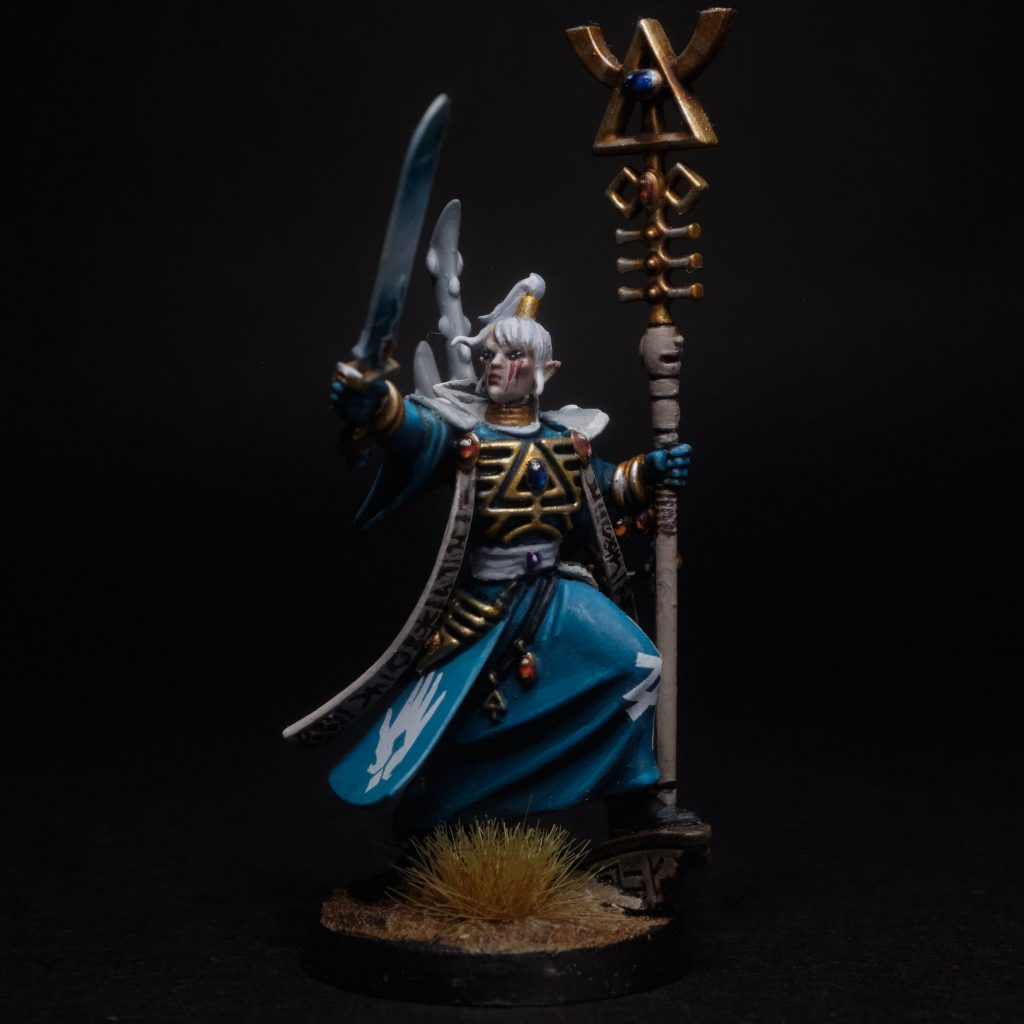
Along with the six stratagems, the index provides four enhancements which are all support-oriented in nature, with no direct damage options. Instead, as might be expected by now, the enhancements largely focus on dice manipulation and ensuring your units do what you want them to do. I think the two that we are going to see most commonly are:
The Weeping Stones: Each time the bearer’s unit destroys an enemy unit, roll a dice and add it to your Fate pool.
Fate’s Messenger: Once per turn, after making a hit, wound, or save roll for the bearer’s unit, you can treat the roll as a six instead.
Both of these have wide use throughout the index, however, for my money these are screaming to be used on Spiritseers attached to Wraith- units. Unlike in 9th edition, the Spiritseer synergizes very well with Wraiths by granting a critical bonus to hit as well as other advantages. The opportunity to further enhance the capability of these deadly and durable units, I think, really makes them a particularly interesting choice in a way they just weren’t in 9th edition.
Five Coolest Units
It is honestly hard to pick just five cool units out of this Eldar index as it is an absurdly deep series of data sheets with a lot of overlapping synergies. The potential to stack combos and cool abilities that enable the overall force is massive and the army will operate less on individual units driving results and more on its collective whole which will include Ynnari and Harlequin units side-by-side with Craftworlds. That said, I’m going to cheat a little and broad brush some of these picks to cover more ground because as I said, it’s a deep set.
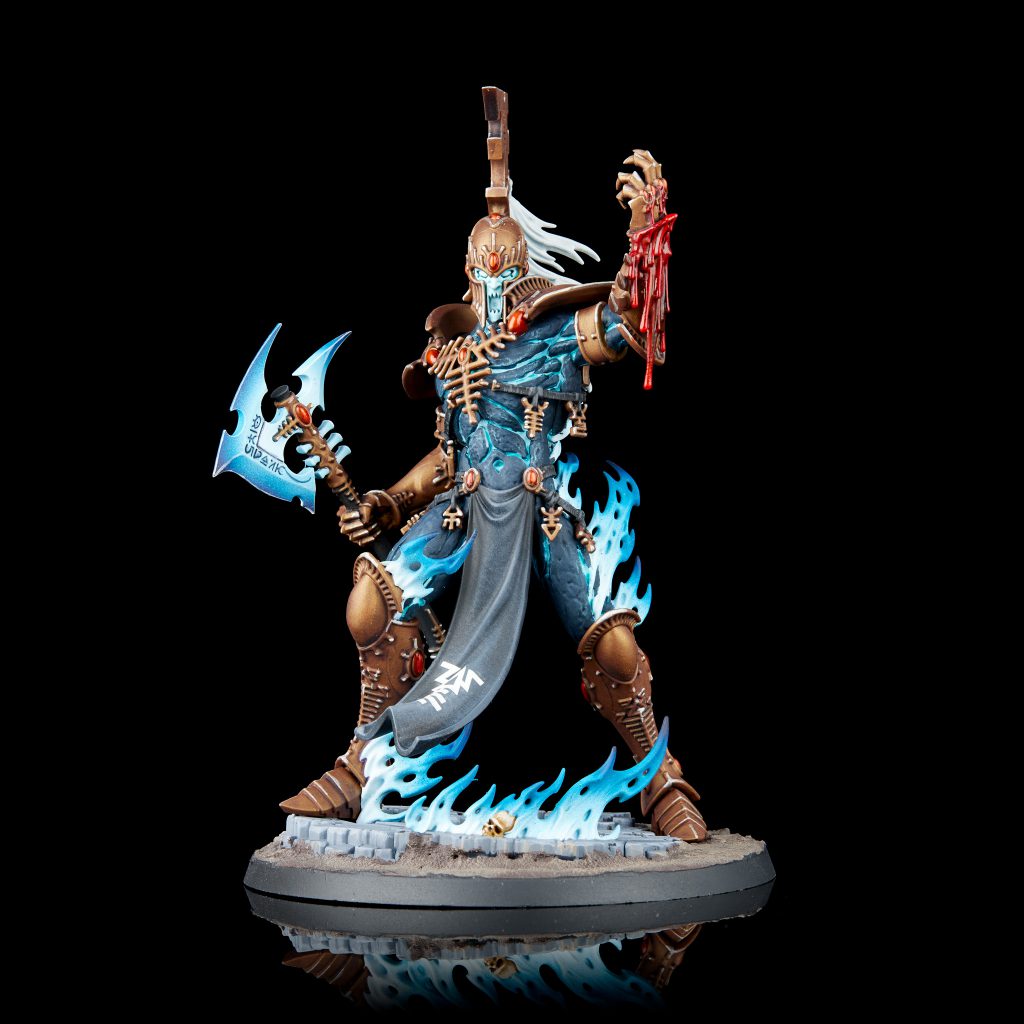
The Avatars: Obvious includes here as they’re the coolest models in the army and no one will convince me otherwise. Both come with a 2+ armor save and 4+ invulnerable while halving all incoming damage which makes them exceptionally durable when you factor in the Strands of Fate dice.
The Avatar of Khaine is the more straight-forward, durable, damage-dealer between the two.The Wailing Doom packs a casual S14 AP-4 and d6+2 D with 6 attacks in combat (or 12A at S7 AP-2 2D on the sweep) with a similar shooting profile but with Sustained Hits D3 at 12” when shooting. I want you to pause for a moment and think about what that could mean when overwatching with a Fate dice. Additionally, the Avatar of Khaine provides a +1″ on the Advance and Charge to Aeldari units within 6” which now includes both Harlequin and Ynnari units.
Yes. Harlequin and Ynnari. Because the restriction to the inclusion of the Avatar of Khaine is only when Yvraine is the Warlord, you can bring Ynnari units including Yvraine if you’d like. So anyway, normal and casual segue.
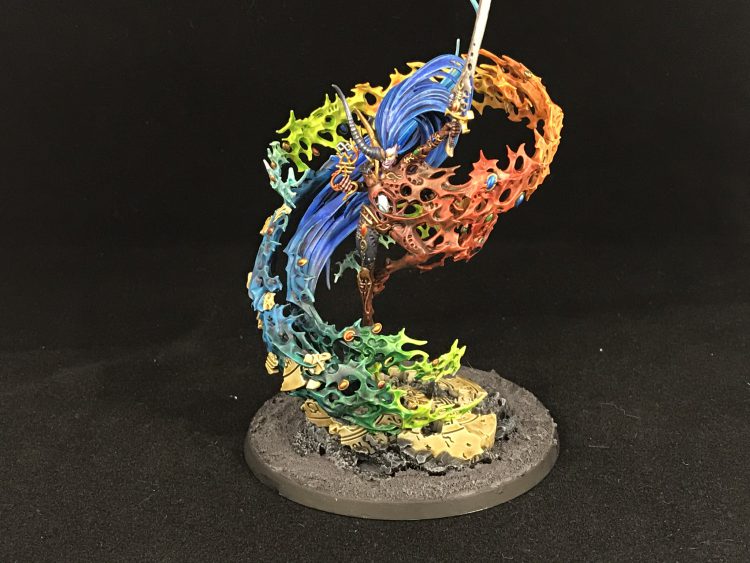
The Yncarne is still a fearsome and incredibly fun unit to use on the table. It maintains its famed Inevitable Death teleportation capabilities albeit limited to once per phase (more on this in a moment). The Swirling Soul Energy attacks can no longer target all units in range, but rather become a Torrent and Psychic weapon that Ignores Cover for d6 + 3 attacks at S7 AP-1 with d3 damage. In combat, the Yncarne packs one less attack than the Avatar of Khaine at a slightly lowered strength and damage output on both options but is nonetheless still strong. However, what makes the Yncarne truly fearsome is the a critical change to its Inevitable Death ability and another change to the core rules.
When setting up the Yncarne via the Inevtiable Death ability, it may be placed anywhere outside of engagement range of a unit. That means that while your army targets a unit in the shooting phase for destruction, the Yncarne can on be on hand to teleport right into that unit’s place, anywhere outside of engagement range, shoot, then charge into another enemy unit. What’s more, because charging units are no longer required to only fight units they declared in the charge, a second charging Aeldari unit could conceivable destroy an enemy unit, allowing the Yncarne to teleport in, then activate, pile-in, and fight against an entirely different unit so long as the Yncarne had completed a charge that turn.
This latter use case is going to cause a table flip when it happens. I’m not even sure it’ll be undeserved.

Harlequin Specialists: Man oh man are these guys cool. The Solitaire and the Death Jester both really stand out as incredibly fun utility pieces. Both carry the Lone Operative ability granting them a fair bit of protection vs the standard character/bodyguard in 10th edition. As one might expect the Solitaire is fast, precise combat expert who retains the capability to advance and charge and the once-a-battle Blitz ability granting an extra three attacks and 2d6” of movement on top of its already substantial 12” for an effective threat range of 12 + 4d6” between the Blitz, advance, and charge (he may even benefit from the Avatar of Khaine’s bonus on advance or charge if positioned correctly). When the Solitaire does arrive, he carries Fights First with 9 (12 with Blitz) Precision attacks hitting on 2s that are S6, AP-2, 2D. He is basically a threat to any non-monster/vehicle unit on the table and will excel at deleting small, non-elite infantry or other Lone Operatives, or backfield objective holders.
On the other end of the spectrum, we have the Death Jester. If the Solitaire is all about getting in close and doing the dirty work, the Death Jester is all about hanging back and pretending to play the game while sniping. Carrying his patented Shreiker Cannon which is a Shuriken Cannon that has had its Sustained Hits 1 replaced by Devastating Wounds. However, his datasheet abilities truly make this model fearsome – if he destroys any models in an enemy unit he will force a Battle Shock test. Strong. However, he may also, select one of the following effects to also be in effect on the Shreiker Cannon – Ignores Cover, Precision, or Sustained Hits 3. All are good and useful options depending on the circumstances, but what you really have to consider is that while the Solitaire receives the Epic Hero tag, and therefore cannot benefit from Enhancements, the Death Jester does not. That means that the aforementioned Weeping Stones becomes a very intriguing pick on this guy, and lending him a very deep capability for dealing a lot of damage combined with your regular pool of Fate dice.
Wings: Worth saying that while the Death Jester isn’t an Epic Hero, they’ve at least considered the possibility that spamming them would be obnoxious – the once-per-turn selected buff can only be used by one Death Jester each turn.
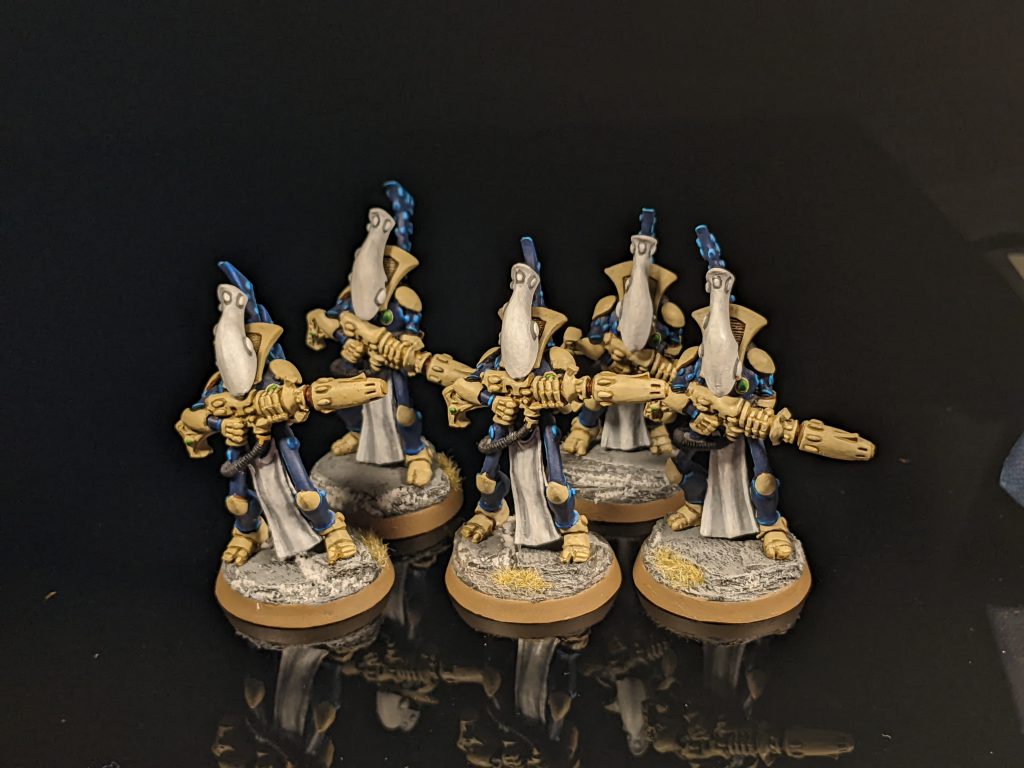
Wraith-units: If you know me, you know I’m a fan of the ghostly bois. Wraith units are the ultimate consensus builders in 40k as both the elf-lovers who get to enjoy elves continuing to elf, and the elf-haters who enjoy elves being dead, can agree that these are cool as hell.
In tenth edition, I think Wraith units get a bit of a shot in the arm on their core statlines, universally gaining a 2+ save, but also gaining in toughness bringing the Wraithguard/blades to T7 and the Wraithlord/seer to T11. While they take a hit on their Ballistic Skill and Weapon Skill, they are all (including the Wraithlords/seers) able to be accompanied by a Spiritseer who boosts their attack hit rolls by +1 and also grants them Lethal Hits. Moreover, for the Wraithguard/blade variants, a Spiritseer may return a slain model to the unit in the command phase… no distinction on which. This likely makes the Spiritseer one of the few Aeldari characters to ever survive a battle as well as a wonderful target for some pre-game Enhancements.
However, what really makes these stand out in my mind is the abilities, and here I think the Wraithguard variants are the winners. Once per battle round, after an enemy unit targets the Wraithguard unit and finishes making attacks, the unit may fire back as if it were your shooting phase. When they do so, they gain the Pistol keyword on their D-Scythes or Wraithcannons, meaning that they may do so even in combat. This makes large, foot-mounted blocks of Wraithguard a fearsome unit who can shoot, charge, fight, and shoot again if they aren’t destroyed in combat. Ladies and gentlemen, it is time to kick the tires on the ol infinity circuit and dust off some wraithbone shells.
Guardians: Do you recall that the humble Guardian got an all-new kit in 9th? It’d be forgivable to have forgotten since they were a tough unit to put onto the table. However, in 10th both the Storm and Defender variants will have a place in your list for creating sticky objectives or generating Fate dice respectively. Which is fantastic news for those who appreciate just how fantastic the updated Guardian kit really is – it’s truly great.
Tenth edition has created a space for units like Guardians who may have otherwise looked like a tax on your roster. Granting each of these types not just a key ability that can factor into any list building strategy or game planning, but also tying Farseer units to them, creates a space that just hasn’t existed previously. A well protected block of Guardian Defenders can be a Fate dice battery when combined with the Farseer’s ability to manipulate Fate. On the flip side, a unit of Storm Guardians can grant you a bit more durability for your Farseer’s while proving the option to move forward and support the larger press. These aren’t a standout unit by any means, but they are my favorite type of unit – reliable, plannable, and full of utility.
Nightspinners: Nightspinners took an edition off but they seem poised to make a comeback. Combining everyone’s favorite combination of abilities, they bring Blast, Indirect Fire, and Devastating Wounds to the table which, if that didn’t already upset Dan Sammons personally, they include Twin-Linked as well to really drive home the point. The Doomweaver comes in with D6 + 3 shots at S7 AP0 and 2D. In addition to the keywords, the Nightspinner can also “pin” an enemy unit that it targeted. Any enemy unit that is hit by a Nightspinner’s shooting subtracts 2” from its movement until the end of your opponent’s next turn. This can be sneakily effective in reducing an enemy’s movement when considering the overwatch stratagem.
Five Biggest changes from 9th
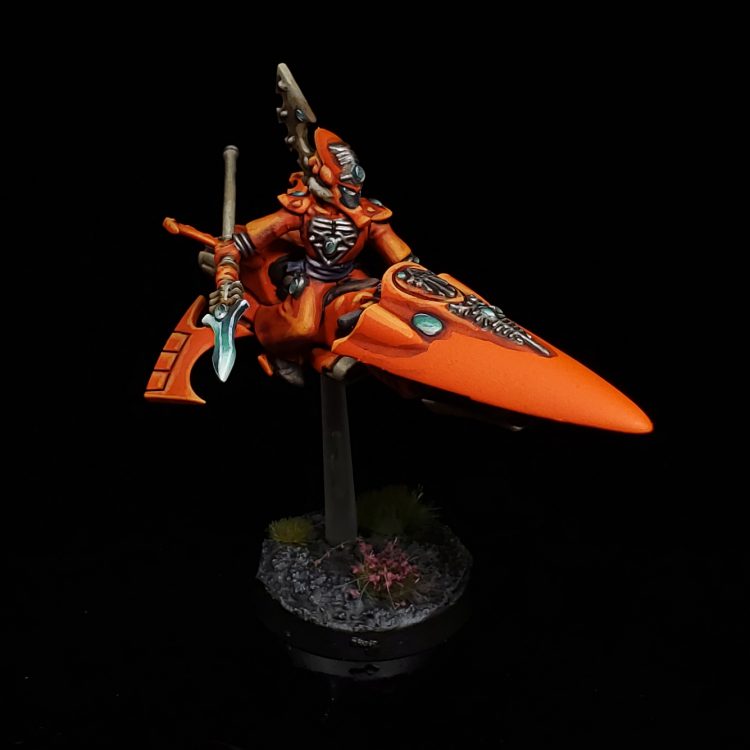
Farseers, Warlocks, & Psychics: I think the single biggest change to how the Eldar operate in 10th edition will come from the diminished flexibility of Farseers, Warlocks, and psychic powers on the overall force. At their heart, these units will still be force multipliers, but the specific type of Farseer/Warlock you choose will determine what type of power you have access too, and in the case of Warlocks, these powers may only be applied to the unit that the character is joining (Guardians or Windriders). While generally the Farseers grant some nice capabilities with respect to Fate, they may find themselves limited vs their current incarnation by whether they can be in position to be effective. Which takes me to my next point.
Character Survivability: Way down in 10th edition. With few options for Lone Operative and the universal removal of Look Out, Sir, Eldar characters find themselves reliant on their Bodyguard units for protection. Unfortunately, those bodyguard units are often T3 1W bodies that a volley of lasguns or a particularly stiff breeze could murder.
Aspect Warriors: In 9th edition Aspect squads stood out strongly based on the strength of their Exarch and their powers. With few exceptions, most aspects only had a single Exarch power that truly distinguished itself from the rest either due to realities of the gameplay or costing. That often drove a single ‘correct’ choice for each Aspect. In 10th, the Aspects have been reevaluated to focus less on their Exarch abilities and more on what the unit wants to do as a whole – giving new life to some and redefining others.
The Phoenix Lords: Gone are the days of Exarch’s reflecting the martial perfection of their chosen shrines. Instead, the Phoenix Lords have taken that mantle for themselves. Whereas they often acted as extremely powerful (or in Barry’s case, extremely cool) individual units in 9th, their 10th edition incarnation will see them filling the same role Exarchs did previously as key leaders to their chosen shrines. This has the dual effect of making the six core Aspects more interesting with added unit abilities, but it also leaves the three without a bit hollow feeling.
List Construction: I first started playing at the release of third edition, and in every single moment since then I can only recall two instances in which Eldar didn’t struggle to bring the units they wanted due to force organization limitations. That time in 4th when you could take anything as Troops so long as you picked the right Craftworld, and at the end of 9th with Arks of Omens. Now the Aeldari are completely unfettered in a way they have frankly never been, allowing you to mix and match options however you want – for a force that has been so constrained by Heavy Support, Fast Attack, or commonly HQ – this is a seismic shift in the approach to list construction.
What Makes the Faction Look Cool?
The Eldar are going to be a ton of fun for those who enjoy the richness and depth of movement, positioning, and overlapping supporting abilities of the different units to create an army that is far greater than the sum of its individual parts. In tenth edition, they are bringing an even deeper bench of options than before that will enable you to build out a fun, effective, and unique force that best suits your sense of narrative or style of play. Whether you are new to the game, an experienced veteran, or an avid hobbyist they are the type of faction that rewards a thoughtful approach in list construction, tabletop play, and theme. And who knows, maybe they’ll even get some rad new plastic Aspects Warriors and Phoenix Lords soon!
The Wings Ynnari Corner
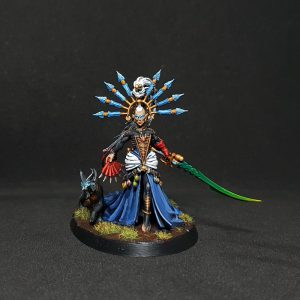
Hey it’s me, Wings, known big fan of weird combined Drukhari/Craftworlds lists. I was resigned to the Drukhari I’d brought for these purposes being relegated to Boarding Actions this Edition, since the trend towards monofaction has been ever greater, but apparently I was wrong.
Ynnari look like they rule this time around, both because their marquee units are great, and because the cross-faction interactions are more permissive than they’ve been since early 8th Edition. As anyone who was playing around that time can attest, this can only end extremely well.
To play an Ynnari army, you have to take Yvraine as your Warlord, which is kind of fine – she’s a good Leader for a squad of Guardians, as she provides a 5+ Feel No Pain and revives some models every turn and can thus stitch your Weapon/Serpentscale platform back together repeatedly. She’s also back to being a great Mortal Wound dealer, with the faintly upsetting combination of Anti-Infantry 2+ and Devastating Wounds on her Psychic Shooting attack.
If you do this, you can choose for your army to be Ynnari, in which case you cannot include the expected set of units (The Avatar, Phoenix Lords, Solitaires, Haemoculus Coven units, plus Corsairs for some reason) but can include up to 1000pts of Drukhari, even though your Faction is Aeldari. They can’t have Enhancements, but that’s kind of the only real meaningful limitation. You’re also not stopped from taking non-Phoenix Epic Heroes any more either.
Here’s the thing – Drukhari units? They’ve still all got the AELDARI keyword, just not in the Faction Section. What do almost all rules interactions in this army key off? The AELDARI keyword. That means that Drukhari units you import get the Detachment Re-rolls, can use the Stratagems, and are valid targets for all the buffs that units like Farseers can throw out, which is buck wild. They can also ride in Wave Serpents, which is incredible – Drazhar or Lelith leading a full stack of their respective followers delivered in this fashion rules. Some Drukhari units also really shine with the re-rolls, Raiders and Scourges in particular.
I’m sure we’ll explore the full implications of this over the next few weeks – suffice it to say that no power on earth is going to stop me running a hilarious mixed Aeldari/Drukhari combined arms list with Yvraine and Scourges in it. My power level is rising by the moment.
Wrap Up
I’m going to close this review by just speaking straight to the Eldar players.
Are Eldar a bit too strong at release? In my opinion the answer is yes. There’s frankly going to be a lot of incredibly cool individuals who will try and take some moral high ground position or try to make you feel bad for playing this faction at the outset of 10th edition. Ignore these people, they do not matter. It’s not your fault that these rules are the way they are. Instead, I want you to get out there and live your best life because I promise you it won’t last long. None of those people would ever bat an eye if the situation were reversed and it were their faction. So when they start their tired refrain, I want you to smile, tune them out, select a Support Weapon to shoot then reach over to your Fate pool and whisper to yourself, “Here comes the D.”
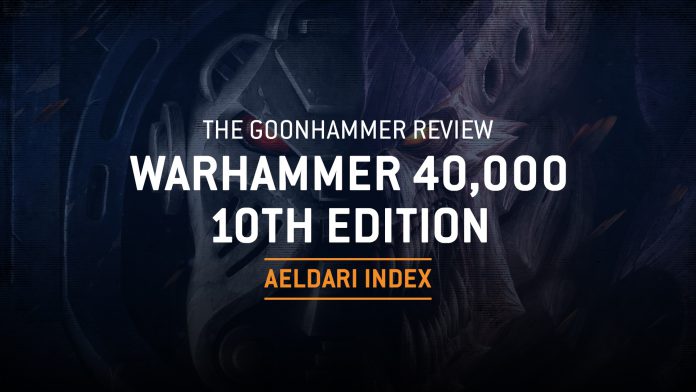


You must be logged in to post a comment.